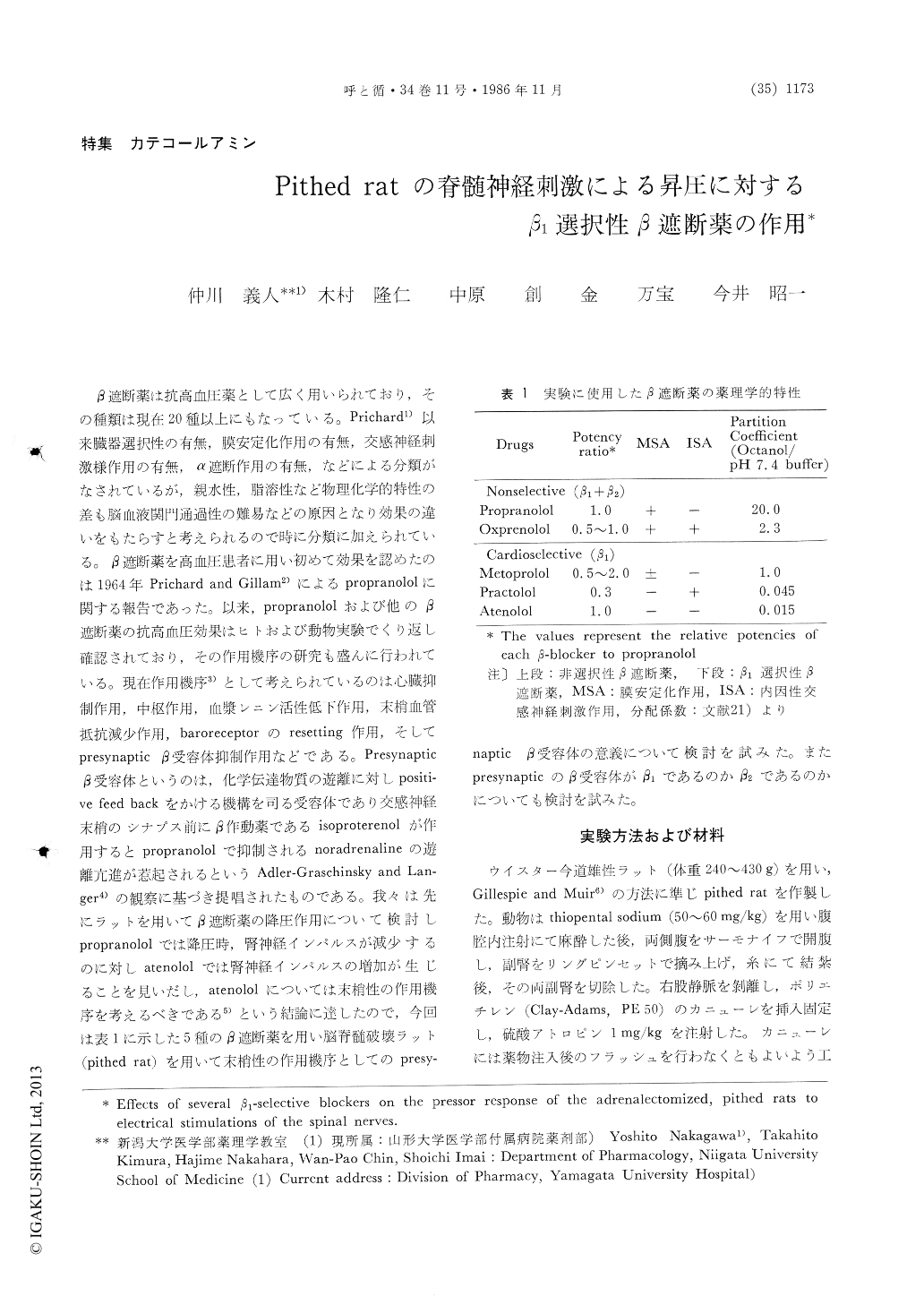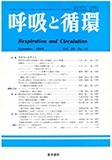Japanese
English
- 有料閲覧
- Abstract 文献概要
- 1ページ目 Look Inside
β遮断薬は抗高血圧薬として広く用いられており,その種類は現在20種以上にもなっている。Prichard1)以来臓器選択性の有無,膜安定化作用の有無,交感神経刺激様作用の有無,α遮断作用の有無,などによる分類がなされているが,親水性,脂溶性など物理化学的特性の差も脳血液関門通過性の難易などの原因となり効果の違いをもたらすと考えられるので時に分類に加えられている。β遮断薬を高血圧患者に用い初めて効果を認めたのは1964年Prichard and Gillam2)によるpropranololに関する報告であった。以来,propranololおよび他のβ遮断薬の抗高血圧効果はヒトおよび動物実験でくり返し確認されており,その作用機序の研究も盛んに行われている。現在作用機序3)として考えられているのは心臓抑制作用,中枢作用,血漿レニン活性低下作用,末梢血管抵抗減少作用,baroreceptorのresetting作用,そしてpresynapticβ受容体抑制作用などである。Presynapticβ受容体というのは,化学伝達物質の遊離に対しpositi—ve feed backをかける機構を司る受容体であり交感神経末梢のシナプス前にβ作動薬であるisoproterenolが作用するとpropranololで抑制されるnoradrenalineの遊離亢進が惹起されるというAdler-Graschinsky and Lan—ger4)の観察に基づき提唱されたものである。我々は先にラットを用いてβ遮断薬の降圧作用について検討しpropranololでは降圧時,腎神経インパルスが減少するのに対しatenololでは腎神経インパルスの増加が生じることを見いだし,atenololについては末梢性の作用機序を考えるべきである5)という結論に達したので,今回は表1に示した5種のβ遮断薬を用い脳脊髄破壊ラット(pithed rat)を用いて末梢性の作用機序としてのpresy—napticβ受容体の意義について検討を試みた。またpresynapticのβ受容体がβ1であるのかβ2であるのかについても検討を試みた。
Effects of several β-blockers on the peripheral sympa-thetic adrenergic nervous system were studied in adrena-lectomized, pithed rats under atropinized and curarized conditions using the rise of the diastolic blood pressure produced by electrical stimulation (ES) of the spinal nerves and by intra-arterially injected noradrenaline as measures. The pressor response to close-arterial injection of noradrenaline was not inhibited by the β-blockers except oxprenolol, suggesting that β-blockers used other than oxprenolol did not possess blocking effects of the postsynaptic α receptor.
The rise of the diastolic blood pressure induced by ES was definitely inhibited by all the β1-selective blockers used (atenolol, practolol and dl-metoprolol) and by oxprenolol (α non-selective β-blocker), but not by d-metoprolol. Propranolol (a non-selective β-blocker, 1, 3 mg/kg, i.v. ) did not produce such an inhibition. This may be due to the unmasking of α-receptor resulted from the inhibition of the β2-receptor on the vascular smooth muscle as mentioned by Hyman et al. Another non-selective β-blocker, oxprenolol produced an inhibi-tion of the pressor response. This discrepancy may be explained by an α-blocking effect as evidenced in the present study and as reported by Vila et al.
These findings indicate that the receptor subserving the facilitation of noradrenaline release from the sympa-thetic postganglionic nerve terminals may be of β1-type.

Copyright © 1986, Igaku-Shoin Ltd. All rights reserved.


